MAX
Printer safety & manuals
Printer overview
The diagram below illustrates the main components of your MAX.
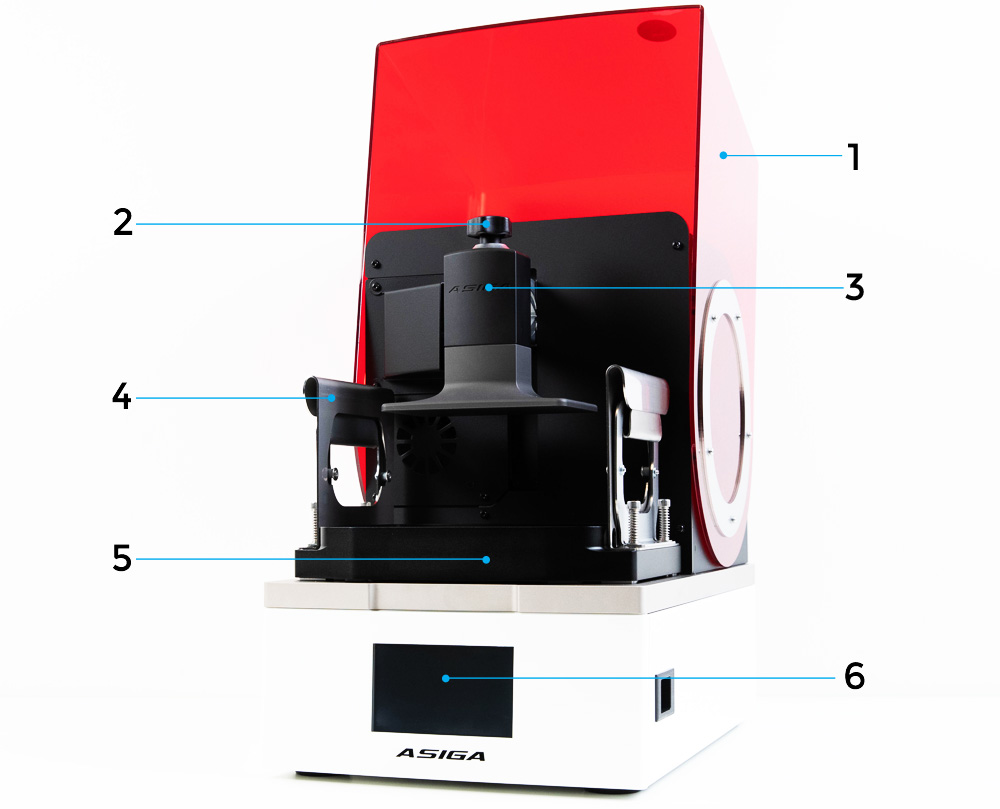
Bodywork
Below is a summary of the main components on the MAX.
Hood
The MAX Hood is constructed of UV blocking hard plastic. This protects the resin from being cured by natural light & the user from UV light emitted.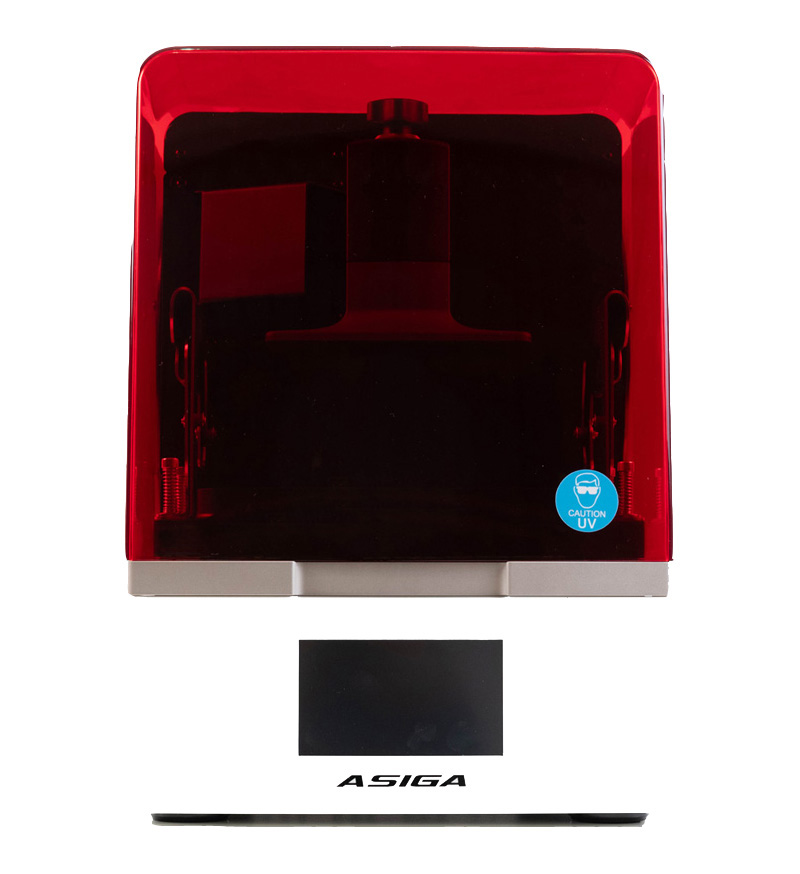
Front Panel
The front panel is the white surround that contains the LCD screen. The LCD screen is the main control panel for the printer.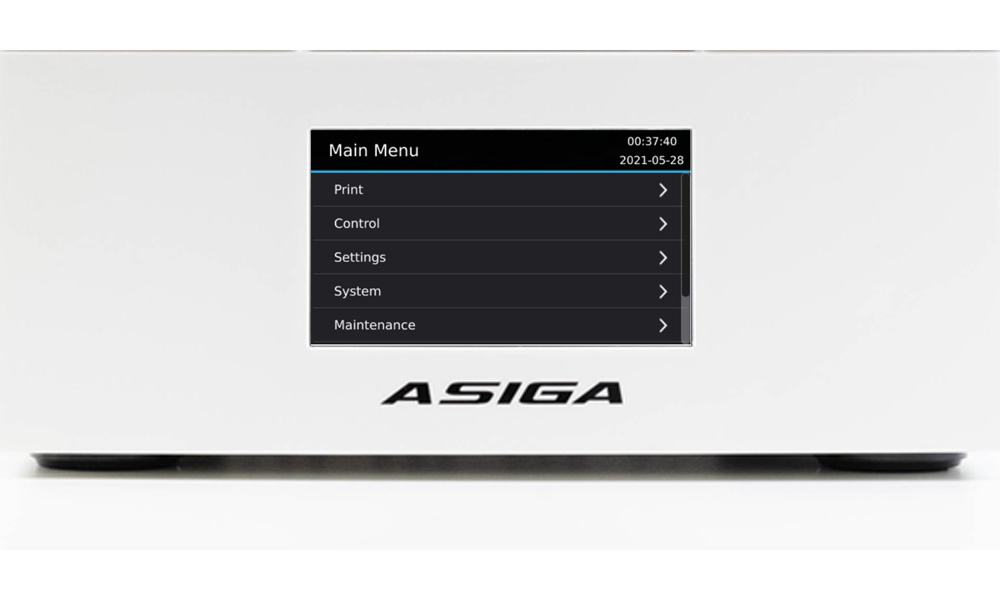
Rear cover
The rear cover is constructed of a curved black metal sheet with cut-outs housing the power and network plugs.
This panel can be quickly removed for service and access to all printer electronics.
The stainless steel panel on the lower half is the bottom rear cover.
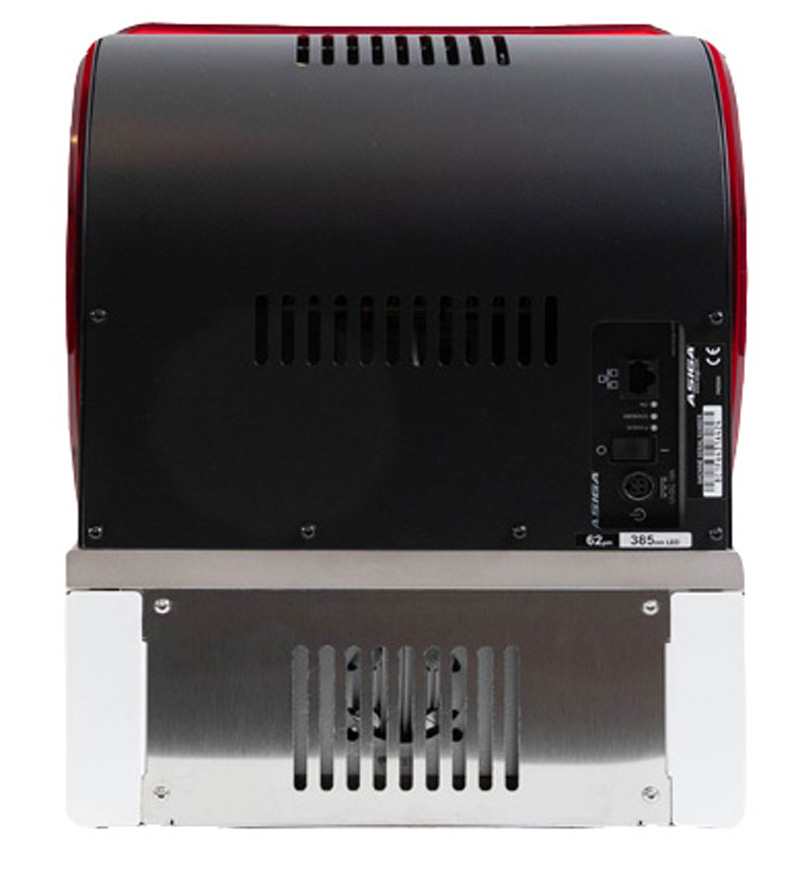
Power/Network connection panel
On the rear of the printer is a connectivity panel.
See diagram below for all inputs.
There is a power ON/OFF button on the top of the printer.
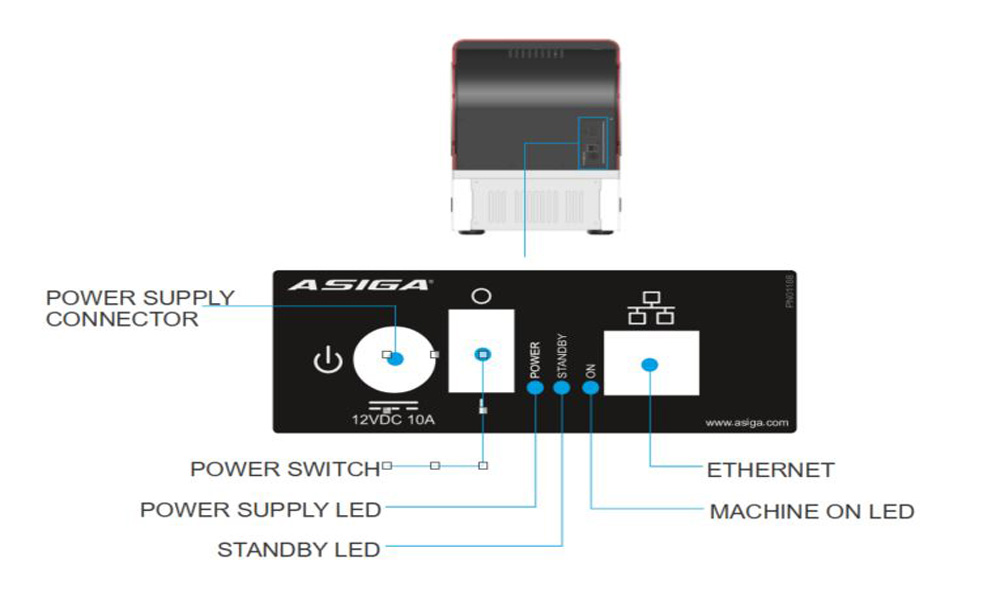
Side panels
The side panels are constructed of metal and painted white.
These can be removed by disengaging the black plastic clip and hinge open.
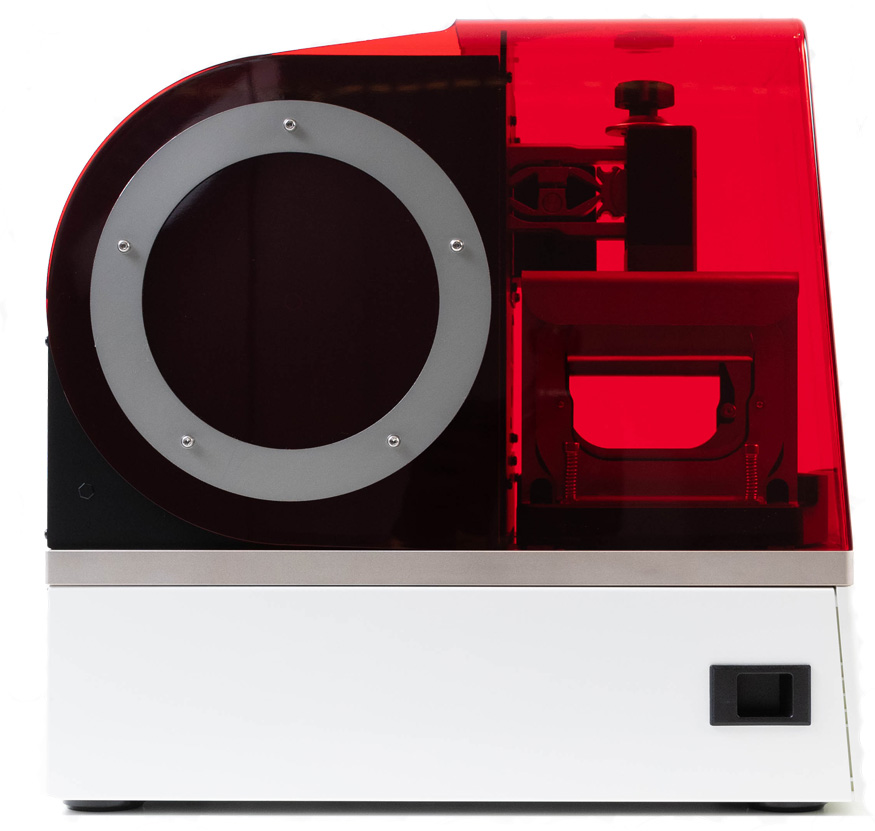
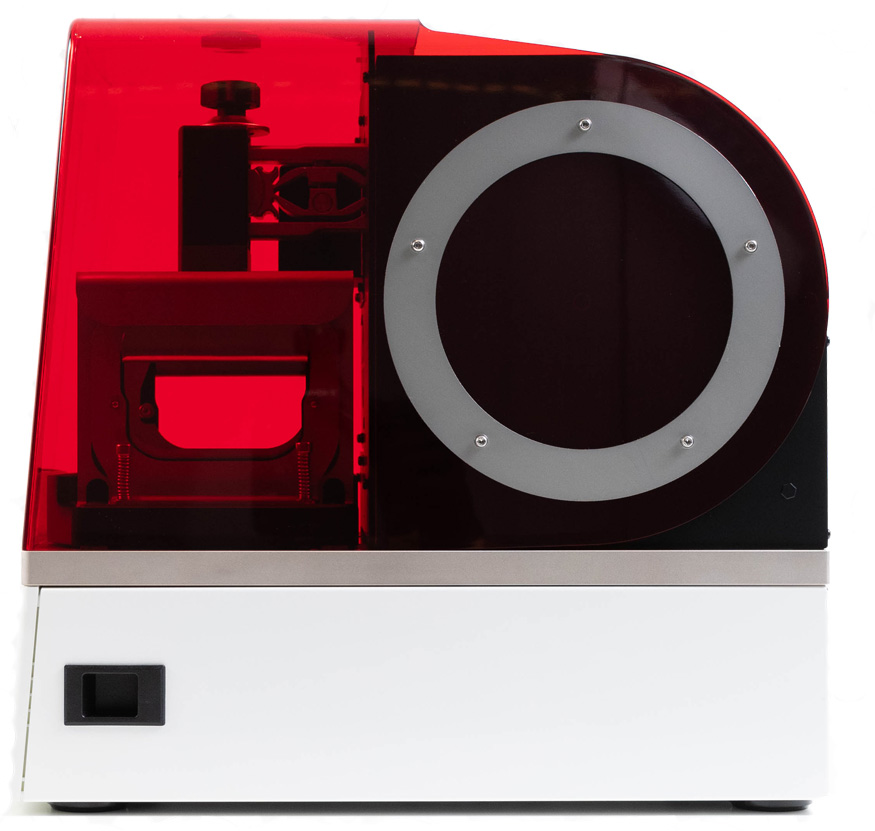
Under the hood
Build Platform Holder
The build platform holder is the arm that protrudes from the vertical stage.
The build platform calibration screw is located here.
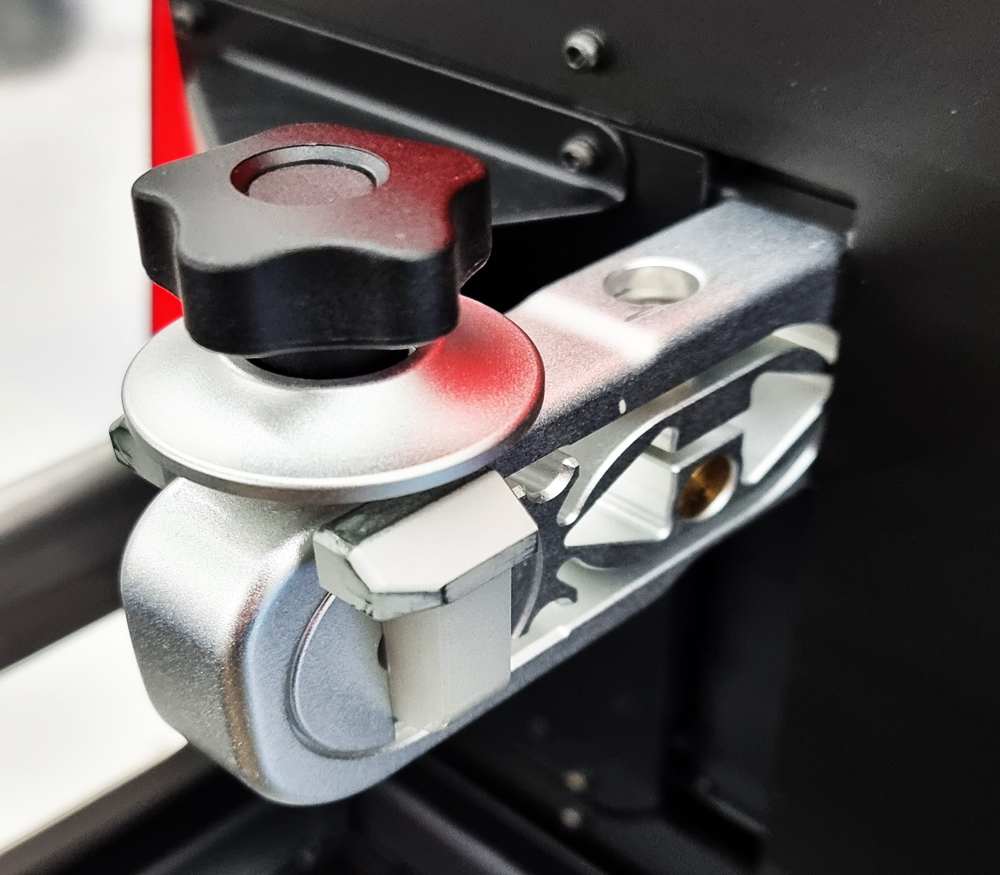
Build Platform
The build platform is the centerpiece of the MAX. It is engineered from anodised steel making it extremely durable.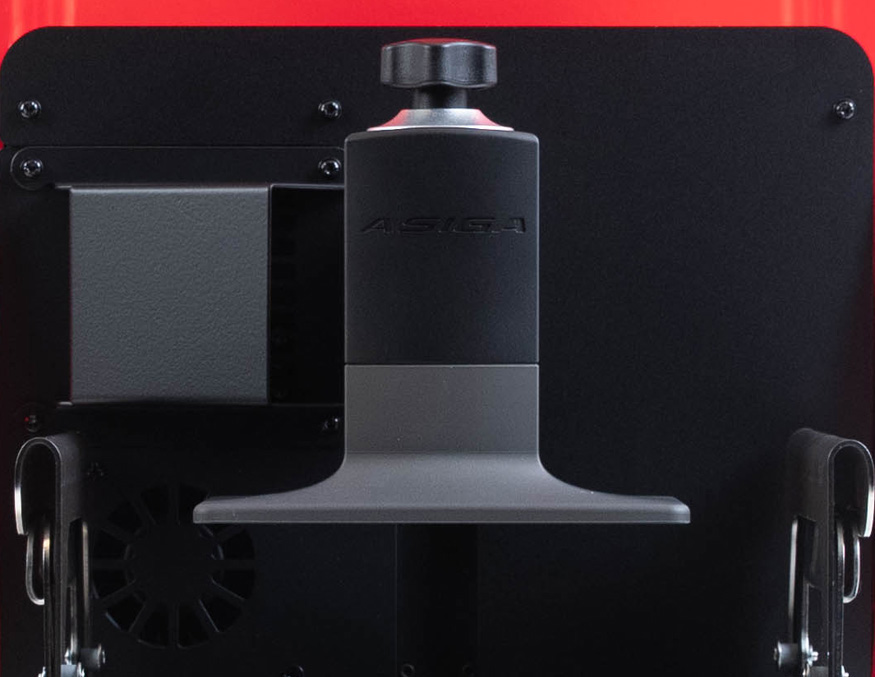
Basin
The basin holds the resin tray and acts as a gateway between the resin and UV light. This glass plate must be kept crystal clean and free from debris.
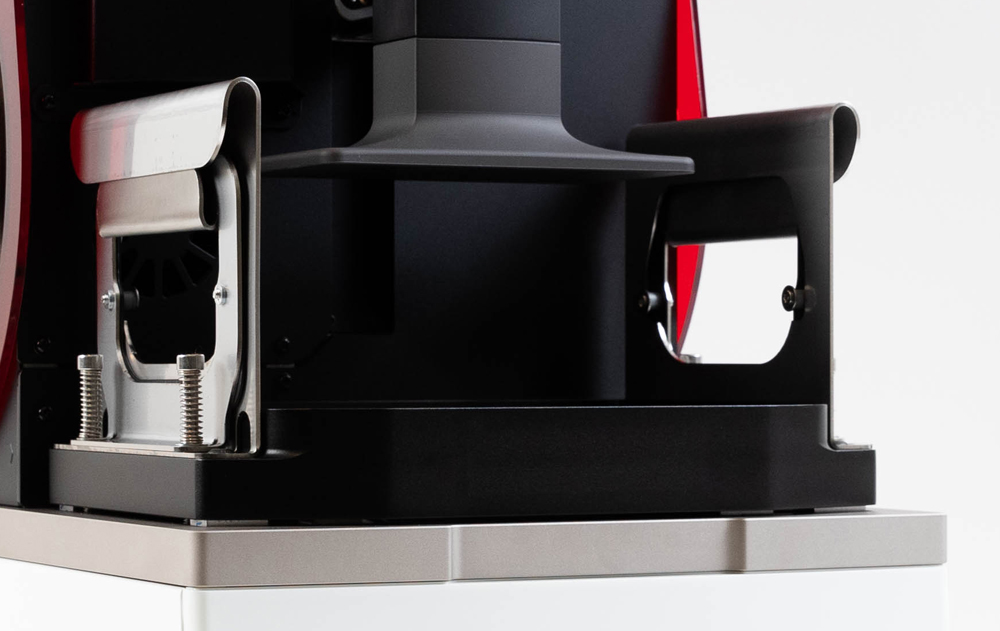
Build Tray
Build trays contain the resin during the printing process.
They are constructed of a flexible film within a rigid plastic frame.
Do not use the same Build Tray for multiple materials as this may create material cross-contamination and transfer of uncured materials.
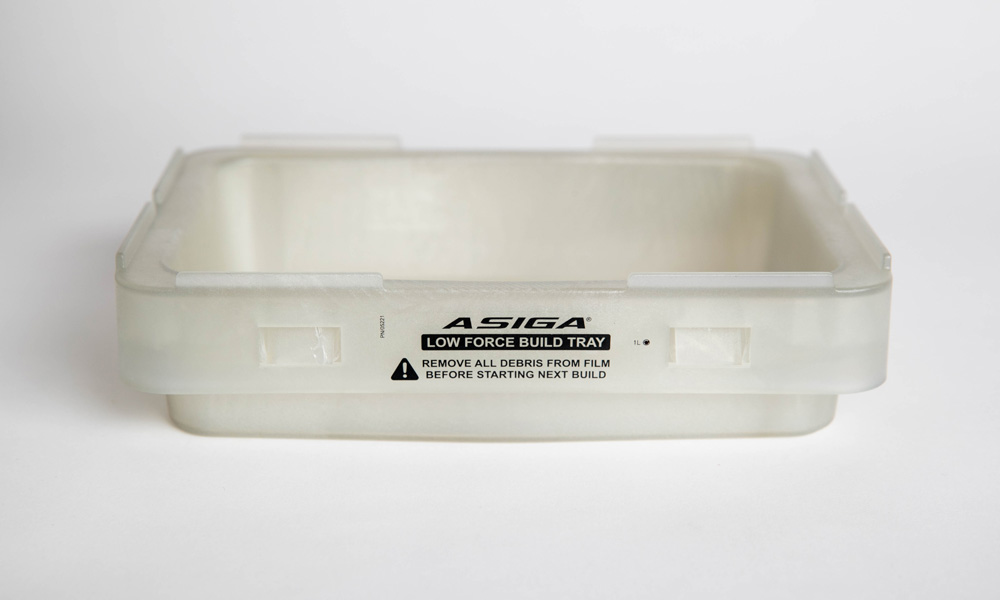
Build Tray clamps
The clamps are designed to hold the basin in place during the printing process.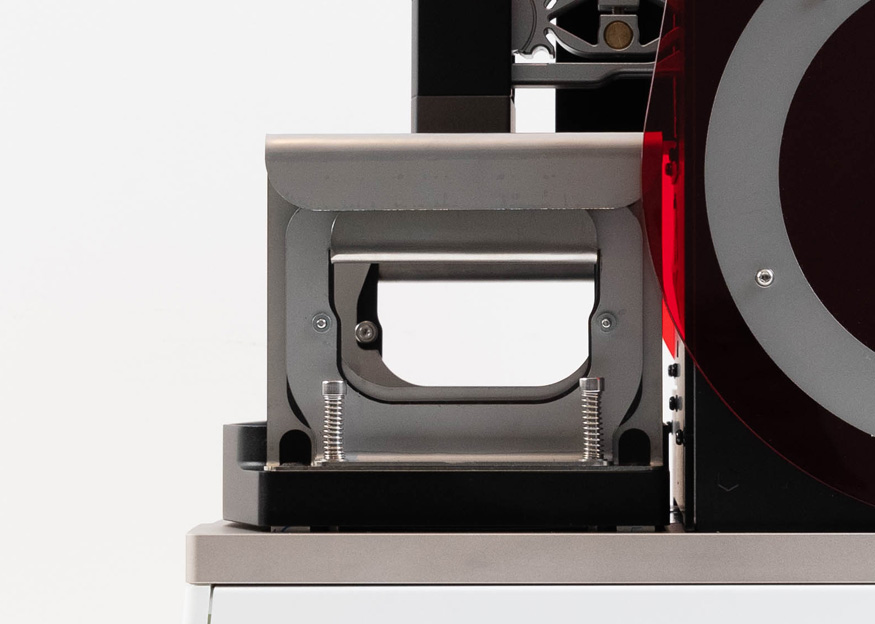
Asiga SPS™ technology
Asiga SPS™ technology is managed by 4 position encoders that surround the basin glass. These sensors detect actual build platform positioning to ensure the layers in your 3D printed part are formed accurately.